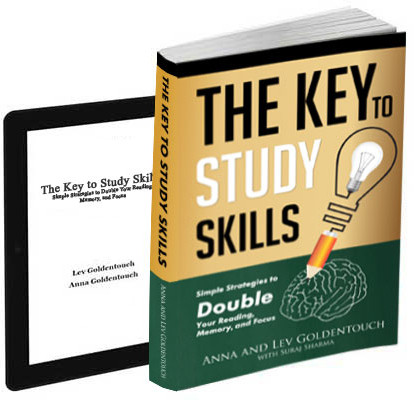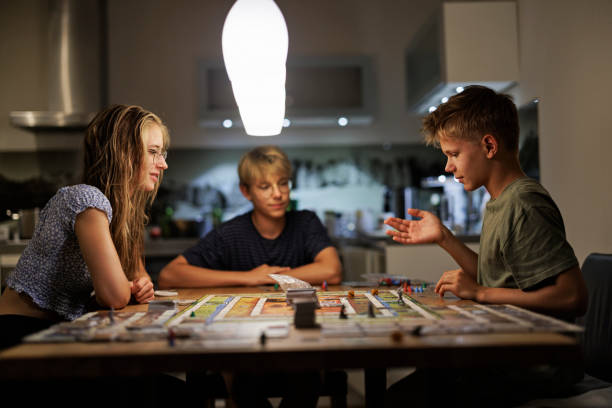Memory board games have long been a staple in the world of tabletop gaming. They are not only fun and engaging but also serve to enhance cognitive skills such as concentration, pattern recognition, and strategic thinking. In recent years, the market has seen a surge in innovative memory board games that cater to all age groups. This article will explore some of the best memory board games available today, highlighting their unique features and benefits.
The Benefits of Memory Board Games
Cognitive Development
Memory board games stimulate brain function and improve cognitive skills. They require players to remember patterns, sequences, and strategies, thereby enhancing their memory capacity and mental agility.
Social Interaction
These games often require multiple players, fostering social interaction and teamwork. They help improve communication skills and build stronger relationships among friends and family members.
Educational Value
Many memory board games are designed with educational elements, making learning fun and interactive. They can teach subjects like history, vocabulary, and critical thinking.
Stress Relief
Engaging in memory board games can be a great way to relax and unwind. The focus required for these games can provide a mental break from everyday stress.
Best Memory Board Games Available Today
1. Memory
Overview
“Memory,” also known as “Concentration,” is a classic board game that has stood the test of time. It involves matching pairs of cards placed face down on a surface. Players take turns flipping over two cards, aiming to find matching pairs.
Key Features
- Simple rules, easy to learn.
- Can be played by people of all ages.
- Enhances visual memory and concentration.
Why It Stands Out
Its simplicity and adaptability make “Memory” a favorite among families and educational institutions. It can be easily modified with different themes, making it engaging for children and adults alike.
2. Simon
Overview
“Simon” is an electronic memory game that has been popular since its release in the late 1970s. The game challenges players to repeat a sequence of lights and sounds that becomes progressively longer and more complex.
Key Features
- Engaging lights and sounds.
- Portable and durable.
- Suitable for solo and group play.
Why It Stands Out
“Simon” combines auditory and visual memory training, making it a well-rounded game for enhancing cognitive skills. Its escalating difficulty ensures that players remain challenged.
3. Sequence
Overview
“Sequence” is a strategic card game that combines elements of both memory and strategy. Players place chips on a board to form sequences of five cards in a row, while also remembering their opponents’ moves.
Key Features
- Combines strategy and memory.
- Suitable for 2-12 players.
- Multiple versions available.
Why It Stands Out
“Sequence” offers a perfect blend of strategy and memory, appealing to a wide range of players. Its versatility and replayability make it a great addition to any game collection.
4. Spot It!
Overview
“Spot It!” is a fast-paced card game that challenges players to quickly identify matching symbols between two cards. Each card features a unique set of symbols, with one and only one match between any two cards.
Key Features
- Fast-paced and exciting.
- Improves visual perception and memory.
- Compact and travel-friendly.
Why It Stands Out
The quick gameplay and competitive nature of “Spot It!” make it a hit among children and adults. Its simplicity and portability ensure it can be enjoyed anywhere, anytime.
5. Memoir ’44
Overview
“Memoir ’44” is a historical board game that simulates World War II battles. Players command troops and use strategy and memory to outmaneuver their opponents.
Key Features
- Historically themed, educational.
- Combines strategy and memory.
- Highly detailed components.
Why It Stands Out
“Memoir ’44” is not just a game; it’s an immersive experience that teaches history and strategy. Its detailed scenarios and replayability make it a favorite among history enthusiasts and strategy gamers.
6. Mysterium
Overview
“Mysterium” is a cooperative game where players work together to solve a mystery. One player takes on the role of a ghost, providing clues to the others, who must piece together the events leading to the ghost’s demise.
Key Features
- Cooperative gameplay.
- Rich narrative and artwork.
- Enhances deductive reasoning and memory.
Why It Stands Out
The unique role of the ghost and the immersive storytelling set “Mysterium” apart from other memory games. Its cooperative nature fosters teamwork and communication, making it a great choice for social gatherings.
7. Braintopia
Overview
“Braintopia” is a fast-paced game that challenges players’ cognitive abilities, including memory, perception, and reasoning. It features a variety of mini-games that test different aspects of brain function.
Key Features
- Multiple types of challenges.
- Engaging and educational.
- Suitable for all ages.
Why It Stands Out
“Braintopia” offers a diverse range of cognitive challenges, ensuring that players remain engaged and stimulated. Its educational value makes it an excellent choice for family game nights and classroom settings.
8. Codenames
Overview
“Codenames” is a word-based game where players use clues to find their team’s secret agents among a grid of words. Memory plays a crucial role as players must remember previous clues and associations.
Key Features
- Word-based gameplay.
- Encourages teamwork and communication.
- Multiple versions and expansions.
Why It Stands Out
The clever use of words and the need for strategic thinking make “Codenames” a unique memory game. Its ability to foster teamwork and its variety of versions ensure it remains fresh and exciting.
9. The Mind
Overview
“The Mind” is a cooperative card game where players must play cards in ascending order without communicating. Memory and intuition are key as players work together to complete levels.
Key Features
- Cooperative gameplay.
- Minimalistic design.
- Enhances non-verbal communication and memory.
Why It Stands Out
“The Mind” challenges players in a unique way, relying on intuition and memory without verbal communication. Its simplicity and depth make it a compelling and innovative game.
10. Pictomania
Overview
“Pictomania” is a drawing game where players must draw and guess pictures simultaneously. Memory comes into play as players must remember their own and others’ drawings to make accurate guesses.
Key Features
- Combines drawing and guessing.
- Fast-paced and chaotic.
- Suitable for parties and large groups.
Why It Stands Out
The combination of drawing and guessing, along with the memory aspect, makes “Pictomania” a lively and entertaining game. Its chaotic nature ensures plenty of laughs and engagement.
Honorable Mentions
BrainBox
BrainBox games cover a variety of subjects, from geography to history. Players have a limited time to study a card before answering questions about it, testing both short-term and long-term memory.
Qwirkle
While primarily a pattern-matching game, Qwirkle also requires players to remember the shapes and colors played, making it a fun way to boost memory.
Anomia
Anomia challenges players to recall and shout out words that fit certain categories, enhancing quick thinking and memory retrieval.
Choosing the Right Memory Board Game
Age Appropriateness
Ensure the game is suitable for the age group you’re targeting. Some games are designed specifically for children, while others may be more complex and suitable for adults.
Number of Players
Consider how many people will be playing. Some games are great for large groups, while others are better suited for solo play or small gatherings.
Complexity
Think about the complexity of the game. Beginners might prefer simpler games like “Memory” or “Simon,” while more experienced gamers might enjoy the strategic depth of “Memoir ’44” or “Mysterium.”
Theme and Interest
Choose a game that aligns with the interests of the players. History buffs might enjoy “Memoir ’44,” while those who love word games might prefer “Codenames.”
Tips for Enhancing Memory Through Games
Regular Play
Consistently playing memory board games can lead to gradual improvement in memory skills. Make it a routine to play these games regularly.
Mix and Match
Don’t stick to just one game. Playing a variety of memory board games can provide a more comprehensive workout for your brain.
Combine Learning with Play
Choose games that also educate, ensuring that the memory exercises are both fun and informative. This can make the learning process more enjoyable and effective.
Play in Groups
Playing memory board games in groups can enhance social skills and make the experience more enjoyable. It also introduces a competitive element that can further engage players.
By integrating these tips and regularly engaging in memory board games, you can significantly boost your cognitive abilities while having a great time with friends and family.
Conclusion
Memory board games offer a wide range of benefits, from enhancing cognitive skills to providing hours of entertainment. Whether you’re looking for a simple game for family night or a more complex strategy game, there’s something for everyone. The games listed above represent some of the best memory board games available today, each offering unique features and challenges. Incorporating these games into your routine can not only improve your memory but also provide endless fun and bonding opportunities.
FAQs
What are the benefits of playing memory board games?
Memory board games improve cognitive functions such as concentration, pattern recognition, and strategic thinking. They also promote social interaction and can be educational.
Are memory board games suitable for all ages?
Yes, many memory board games are designed to be enjoyed by all age groups. Games like “Memory” and “Simon” are simple enough for young children, while games like “Memoir ’44” and “Mysterium” can be enjoyed by adults.
Can memory board games be played solo?
Some memory board games, like “Simon,” are designed for solo play, while others, like “The Mind,” require multiple players. Many games can be adapted for solo play with some creativity.
How can memory board games be educational?
Memory board games often incorporate themes and elements that can be educational. For example, “Memoir ’44” teaches history, while “Codenames” enhances vocabulary and language skills.
What makes a good memory board game?
A good memory board game is engaging, challenging, and suitable for the intended age group. It should also offer replayability and the ability to be enjoyed by different numbers of players.

Get 4 Free Sample Chapters of the Key To Study Book
Get access to advanced training, and a selection of free apps to train your reading speed and visual memory

